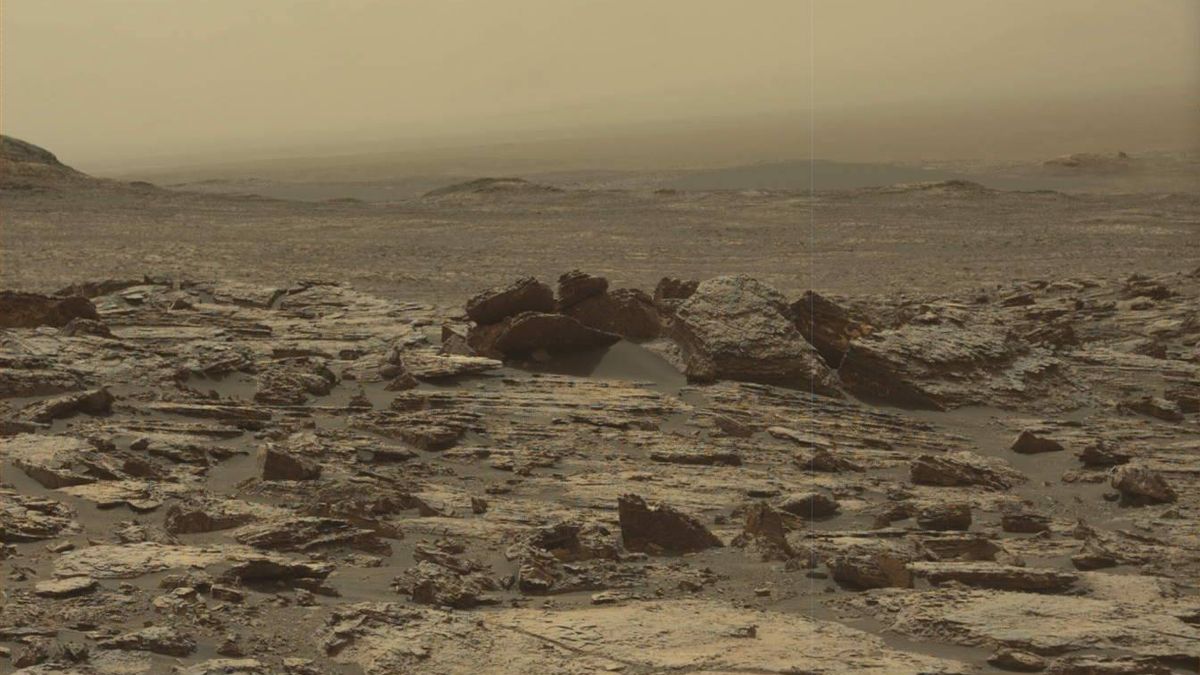
The curiosity Mars Rover has discovered intriguing chemical evidence, in the form of abnormal amounts of manganese oxide, suggesting this Mars Billions of years ago had not only a habitable environment, but also an environment that may have been inhabited by microbes.
NASA’s curiosity is exploring the gigantic Gale Crater with a diameter of 154 kilometers (about 96 miles).where the rover landed in 2012. Curiosity’s discoveries have already shown that the crater was at least partially submerged long ago, though the evidence for this has been disputed. However, the rover’s latest findings not only strengthen the argument for an ancient lake, but also suggest that conditions in the lake were conducive to life.
The evidence is associated with the compound manganese oxide. Curiosity first discovered small amounts of manganese oxide in Gale Crater in 2016, but has now discovered much larger amounts of manganese oxide in sedimentary rocks of a mudstone geological unit called the Murray Formation. The Murray Formation is located on the flank of Mount Sharp, in the center of the crater.
Related: NASA’s Curiosity Mars rover begins exploring the possible dried-up Red Planet River
The manganese oxide was identified by Curiosity’s ChemCam instrument, which fires a laser at rocks that scientists want to study. The laser heats a small portion of a rock’s surface, causing it to vaporize, resulting in a small plasma cloud that ChemCam’s built-in camera and spectrometer can study from a distance to determine the composition of the ablated material. ChemCam discovered mudstone that was up to 45% enriched in manganese oxide.
On SoilManganese oxide is often found in lakes or river deltas where there are high oxidation conditions. Additionally, microbes found in those environments can help catalyze the oxidation process.
Typically, this process requires a steady flow of oxygen, which is in short supply on Mars. The previously discovered small amounts of manganese oxide found on Mars in 2016 could be declared without significant amounts of oxygen, but the large quantities discovered in the Murray Formation are an entirely different matter. To achieve such quantities, the oxidation process would require a significant amount of oxygen.
“It is difficult for manganese oxide to form on the surface of Mars, so we did not expect to find it in such high concentrations in shoreline deposits,” said lead researcher Patrick Gasda of Los Alamos National Laboratory in a study . rack. “On Mars we have no evidence for life, and the mechanism for producing oxygen in Mars’ ancient atmosphere is unclear, so how the manganese oxide was formed and concentrated here is truly a mystery.”
One clue lies in the nature of the mudstone sediments in which the manganese oxide was found. The manganese oxide-enriched rocks were found at a location between two geological units in the Murray Formation. One unit is nicknamed Sutton Island and appears to represent sediments deposited at the edge of a lake; the other, nicknamed Blunts Point, would have been deeper in the lake.
The manganese oxide-enriched mudstone is coarser, with larger grains, than the rock elsewhere in the crater where only small amounts of the compound have been discovered. This supports the theory that the Sutton Island/Blunts Point region is either the location of an ancient river delta that once flowed into the lake, or is a lake shoreline, both of which represent locations where larger-grained sediments would have been preferentially laid down. down. The larger grains would have helped form a more porous rock than the fine-grained mudstone seen elsewhere in Gale Crater – mudstone that probably comes from much deeper in the lake. This porosity would allow groundwater to flow more freely. The manganese could have seeped from this groundwater as it flowed through the coarse-grained mudstone, the scientists say, becoming concentrated in the rocks. However, where the oxygen came from to oxidize it remains a mystery.
“These findings point to larger processes taking place in the… Martian atmosphere or surface water and show that more work needs to be done to understand oxidation on Mars,” Gasda said.
The presence of manganese oxide also strengthens the possibility that microbial life could have existed in the lake. Not only can microbes catalyze the oxidation of manganese, but they are also potentially able to use manganese’s many oxidation states as a source of chemical energy for their metabolism, as microbes do on Earth. In other words, in a sense, the abundance of manganese oxide may be indirect biosignature.
“The Gale Lake environment, as revealed by these ancient rocks, gives us a window into a habitable environment that is surprisingly similar to places on Earth today,” said ChemCam principal investigator Nina Lanza of Los Alamos. “Manganese minerals are common in the shallow, oxygen-rich waters on the shores of Earth’s lakes, and it is remarkable to find such recognizable features on ancient Mars.”
The findings were published on May 1 in the Journal of Geophysical Research: Planets.
Leave a Reply